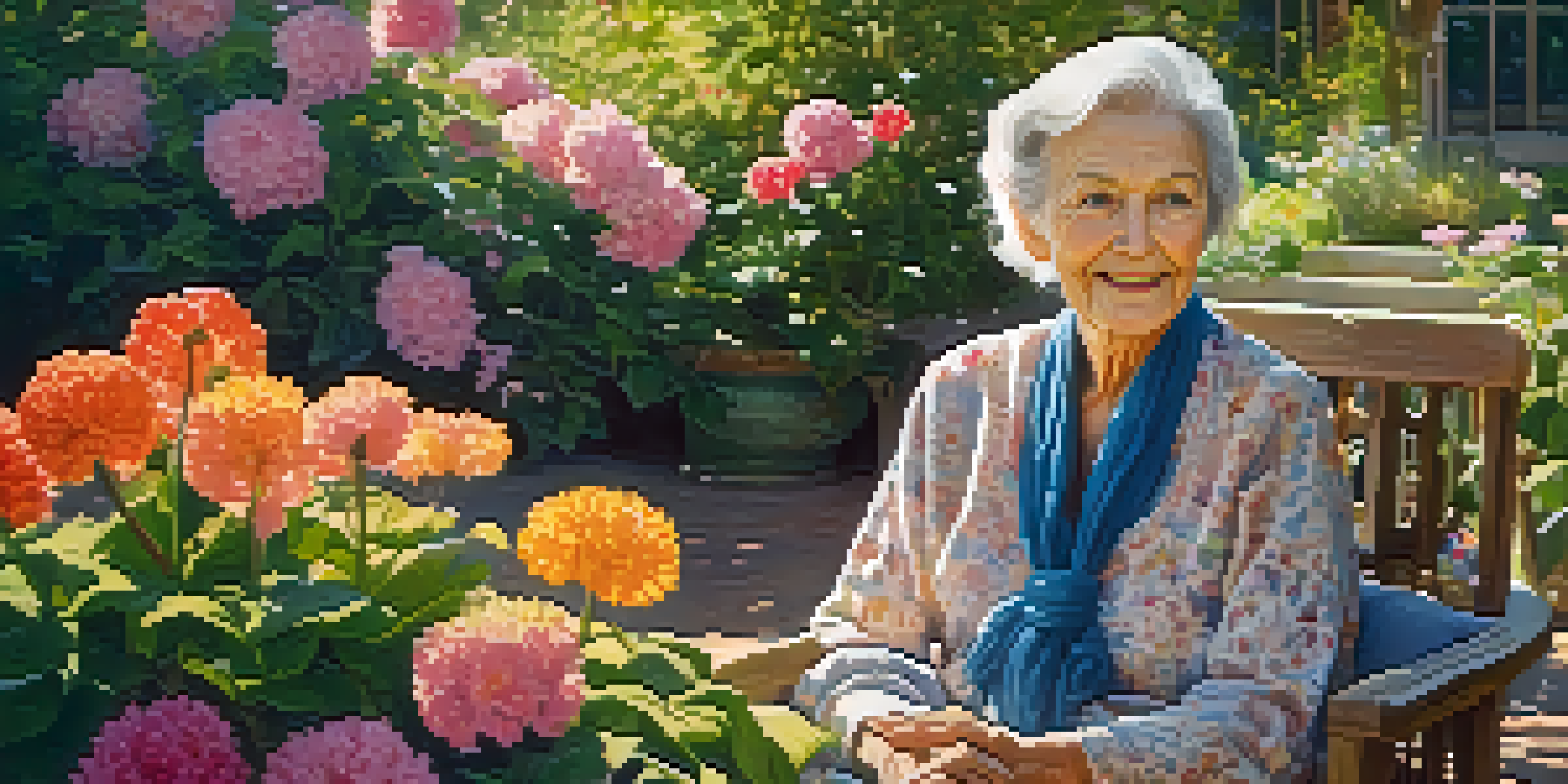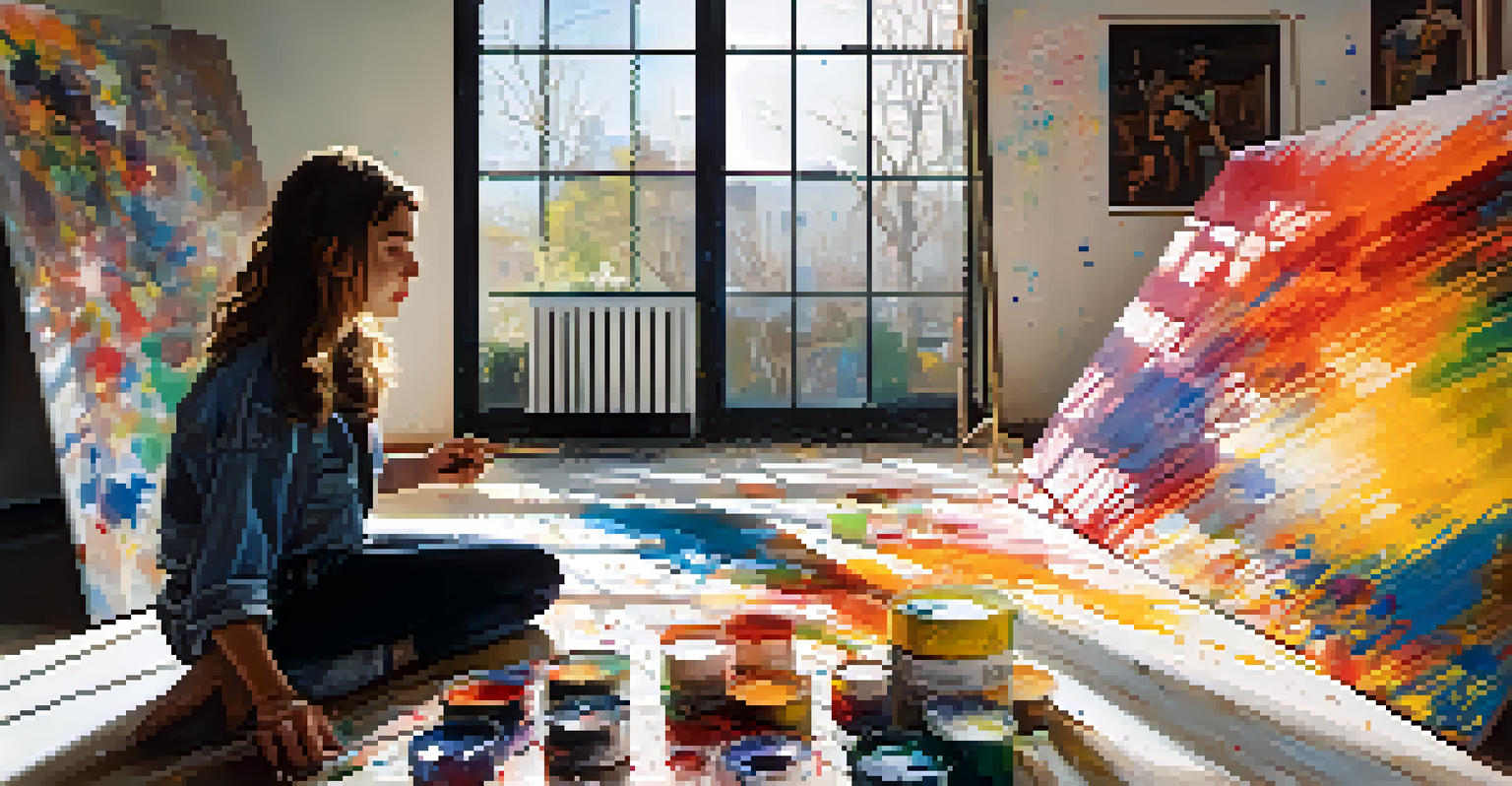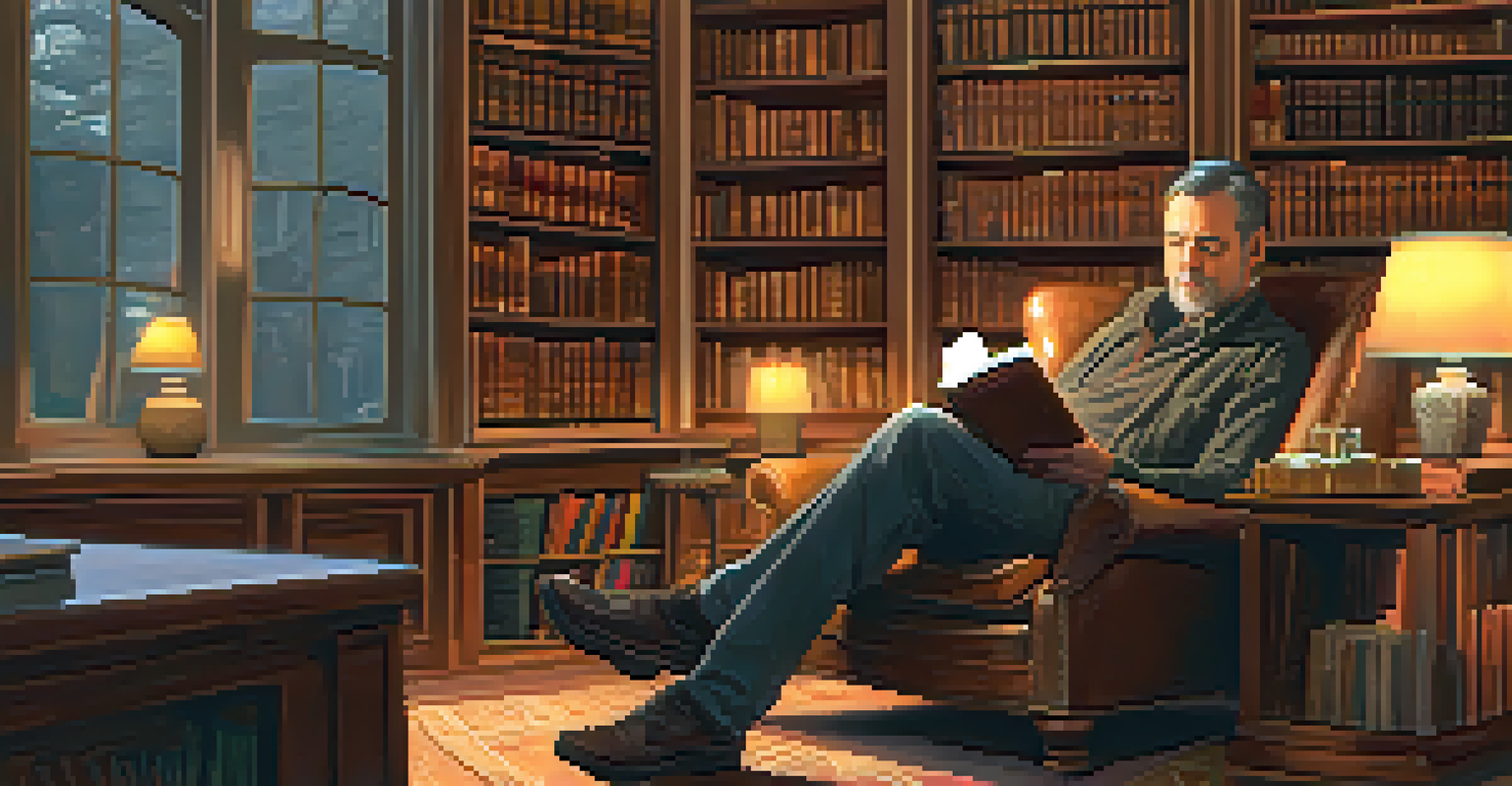Portrait Photography vs. Painting: Techniques Compared

Understanding the Essence: Photography vs. Painting
At their core, both portrait photography and painting aim to capture the essence of a subject. Photography does this by freezing a moment in time, while painting allows for interpretation and expression through brush strokes and colors. Each medium has its own unique way of conveying emotion and personality, inviting the observer to connect with the subject on a deeper level.
Photography is the story I fail to put into words.
In photography, the use of light, composition, and angles come together to create a lifelike representation. In contrast, painting offers the artist more freedom to manipulate reality, emphasizing certain features or emotions that may not be as pronounced in a photograph. This fundamental difference shapes the viewer's experience as they engage with each art form.
Ultimately, while both mediums serve the purpose of depicting a subject, they do so through distinct approaches that reflect the artist’s intent. Portrait photography captures an instant, while painting can evoke a broader narrative and emotion, encouraging us to appreciate the beauty in both forms.
The Role of Light in Portrait Photography
Light is the magic ingredient in portrait photography, profoundly influencing the mood and tone of the image. Photographers often use natural light or studio lighting to highlight their subject's features, creating depth and dimension. The right lighting can transform a simple portrait into a captivating visual story, showcasing not only the subject but also their environment.

Techniques like backlighting, side lighting, and soft diffused light can dramatically alter the perception of a portrait. For instance, backlighting creates a halo effect, adding an ethereal quality, while side lighting can enhance textures and shadows, giving a more dramatic feel. Understanding how to manipulate light is essential for photographers to convey the right emotion and intention in their work.
Role of Light and Color
Both mediums utilize light and color, but photography relies on real-world effects, whereas painting allows for imaginative interpretations.
In contrast, painters can create light effects using color and brushwork, allowing for even greater artistic expression. They can choose to highlight certain areas or create shadows that may not exist in reality, leading to unique interpretations of light that photography may not replicate. This difference in approach to light highlights the creative possibilities within each medium.
Composition Techniques in Portrait Photography
Composition in portrait photography is about arranging elements within the frame to create a visually appealing image. This includes the subject's position, background, and the overall balance of the photo. Techniques like the rule of thirds help photographers decide where to place their subject, drawing the viewer’s eye naturally to the focal point.
Every artist dips his brush in his own soul, and paints his own nature into his pictures.
Additionally, negative space becomes an essential tool in photography. By intentionally leaving space around the subject, photographers can create a sense of isolation or context, enhancing the narrative of the portrait. This careful consideration of composition allows for a dynamic portrayal of the subject's personality and story.
While painters also consider composition, they have the liberty to rearrange elements or even create entirely new backgrounds. This flexibility can lead to imaginative scenes that evoke emotions beyond the physical appearance of the subject. Therefore, both mediums utilize composition, but in ways that serve their artistic goals differently.
Color Theory in Photography and Painting
Color theory plays a crucial role in both portrait photography and painting, influencing how a subject is perceived. In photography, colors can evoke specific feelings or moods, and photographers often use filters or post-processing techniques to enhance these effects. For instance, warm tones can create a sense of comfort, while cooler tones might convey calmness or melancholy.
On the other hand, painters have the ability to blend and layer colors to achieve desired effects, often expressing emotions more abstractly. They can choose colors that aren't present in reality to evoke feelings or ideas that resonate with the viewer. This creative liberty allows painters to create a mood that may differ from the actual scene.
Subject's Influence on Art
The subject significantly shapes the final artwork in both photography and painting, each medium engaging with the subject in unique ways.
Both mediums can utilize color to shape the viewer's emotional response, but the methods of application differ significantly. Photography often relies on real-world colors captured in the moment, while painting allows for a more imaginative and interpretive use of color, resulting in unique artistic expressions.
Capturing Emotion: Photography vs. Painting
Emotion is a vital component of both portrait photography and painting, though each medium expresses it differently. Photographers capture fleeting moments that can convey a wide range of feelings, from joy to sorrow, often using candid shots to reveal genuine reactions. The immediacy of photography allows for a raw and authentic representation of emotion.
In contrast, painters often convey emotion through deliberate choices in technique and style. The way a brush stroke is applied or the choice of colors can evoke strong feelings, allowing the artist to express emotions that might not be visible in a photograph. This artistic interpretation opens the door for viewers to engage with the artwork on a more personal level.
While both mediums excel at capturing emotion, photography often does so in real-time, whereas painting offers a more reflective and interpretive approach. This distinction enriches our understanding of how different art forms can connect us to the human experience.
The Subject's Role in Portrait Creation
The subject of a portrait plays a pivotal role in both photography and painting, influencing how the final artwork is perceived. In photography, the subject’s personality and mood can significantly impact the outcome, often leading to spontaneous moments that define the portrait. Photographers strive to create a comfortable environment to help subjects express themselves authentically.
Conversely, in painting, the artist's relationship with the subject can lead to a more stylized interpretation. The artist may choose to emphasize certain characteristics or emotions, crafting a narrative that might not be evident in a photograph. This creative decision-making process allows for a rich exploration of identity and character.
Distinct Approaches to Emotion
Photography captures real-time emotions, while painting offers a reflective and interpretive expression of feelings.
Ultimately, both mediums rely on the subject to bring their work to life, yet they engage with the subject in distinct ways. Photography captures the moment as it is, while painting provides the opportunity to express and interpret beyond the surface.
Final Thoughts on Portrait Photography and Painting
As we delve into the world of portrait photography and painting, it becomes clear that both mediums offer unique perspectives on capturing the human experience. Each has its own set of techniques and approaches that contribute to the storytelling aspect of portraiture. By understanding the distinctions and overlaps between these art forms, we can appreciate their individual contributions to visual culture.
Photography excels in spontaneity, capturing real moments that resonate with viewers. Meanwhile, painting allows for deeper emotional exploration and artistic interpretation. Both can evoke profound connections, reminding us of the beauty and complexity of individual stories.

In the end, whether you’re drawn to the immediacy of photography or the expressiveness of painting, both mediums invite us to reflect on who we are and how we relate to one another. By celebrating the strengths of each, we can foster a greater appreciation for the art of portraiture in all its forms.